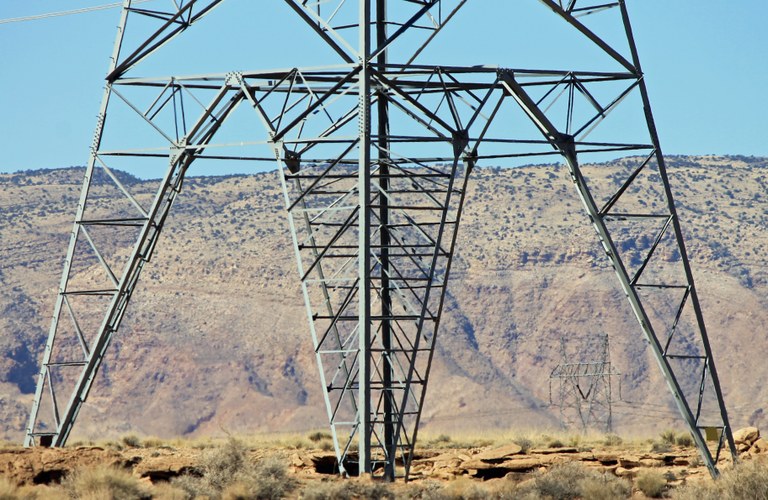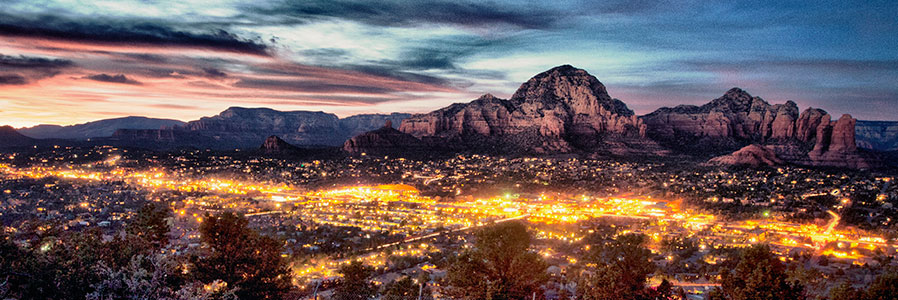
(1) The Limits of Power Transmission in the US:
The state of Oregon cannot send electricity from its wind farms to the state of Florida; the state of Arizona cannot send electricity from its solar farms to the state of New York; and the state of Texas cannot send electricity from its natural gas plants to Washington DC.
These limitations exist because the United States does not have a single, national grid connecting all states with all power sources. Rather, the nation is segmented into "regional" markets, where, for example, states like Washington, Oregon, and California can share and buy power from one another, but states like Texas and Florida have their own regions altogether. (The image below illustrates these regions).
There are 8 such regional markets in the United States, but no national backbone with which to connect them. In order to open the 48 contiguous states, someone would need to construct a national grid. But, who should construct it, and why or why not, pose unique problems and are discussed in the next sections, below.

(2) Benefits of a National Grid
Sharing and buying power from state to state promotes free market principles, reduces costs for consumers, and provides reliability and resiliency for individual states.
The Midwest region (labeled "MRO" in turquoize in the map above) is one example where consumers within the region benefit and states without the region could trade to reduce costs. The state of Iowa leads the nation in wind turbine manufacturing and wind turbine technician employment, and the states of North Dakota, South Dakota, and Nebraska lead the nation in wind flow (both rate and miles-per-hour). Because supply is most abundant and the location is close to where the parts are manufactured, the wind energy generated is cheaper than anywhere else in the nation.
Arizona, for example, cannot compare. It neither manufactures wind turbines nor has the same consistency in wind supply. Each mile that Arizona has to import turbines, and each day the wind does not blow, increases the cost to consumers. (The image below shows a city in Arizona being powered by fossil fuels at night, which is when wind power in the Midwest is known to blow the strongest).
A national grid connecting two regions allows consumers in one region to access power generated for less money in another region, without having to pay substantially more for it. Any state that specializes in a particular kind of fuel can trade power such that no consumer (nationwide) buys power that is not the cheapest source at any given moment. A national grid also allows states to decide not to be in the power generation business altogether, and, in the event of a terrorist event or natural disaster, ensures power is always available from multiple points of generation.

(3) Arguments Against the National Grid and Why the United States Doesn't Have One Today
Various states, advocacy groups, lawmakers, and voters provide different reasons for why a national grid does not exist today, but the two most frequent are cost and states' rights.
- Cost
Transmission lines cost about $1 Million US dollars per mile. That's per mile. It costs about 10x times that if the line is underground. If the state of Arizona wants access to Midwest wind power, consumers in the Midwest say consumers in Arizona should pay for it. On the other hand, consumers in Arizona say, if it wasn't for the transmission line, the Midwest states couldn't profit from their excess wind, and Midwest states should also pay. Considering the positions of all 48 contiguous states makes the debate especially complicated.
An additional challenge is deciding whether the public or private sector should pay; and, if the public sector, then whether the federal government or state governments should provide the funds. The likely answer is a combination of all three, but a reason the grid does not exist today is that no party has been able to settle on an answer all parties agree with.
Parties that advocate federal dollars argue projects such as Trump's proposed Border Wall prove that dollars already exist and that the federal government is already capable of executing national projects, if its leadership emphasizes it. Parties that advocate state and private dollars, on the other hand, typically live in states that don't want a national grid, and argue their state should not have to pay because their state intends to be excluded.
- States' Rights
The state of Texas has its own, regional transmission market because it wants it that way. Once a state enters a multistate, regional transmission market, its utility companies are immediately subject to federal regulations. Depending on who a consumer talks to, federal regulation can be perceived as good or bad.
Americans who advocate for "smaller" federal government argue the role of federal government does not include managing a federal, national grid. Another argument is that the federal government could favor one fuel source over another and use its authority to hurt states that produce less-favored types. Because the federal government's preference for one fuel type would likely change from administration to another administration, such influence would likely hurt and cause imbalance across the national market over time.
The Future of Transmission in the US
Until the cost of individual electric bills becomes intolerable, consumers likely will not demand action. Content such as this post helps educate law-makers but makes little difference if states are capable of generating both clean and dispatchable electricity without respect to a national market.
Energy storage and blockchain technology will add an extra nuance to interstate grid systems. Next topics on this ENERGY discussion will cover these areas individually; but, until then, the Friday Company welcomes the opportunity to receive your feedback on the issues.
Please Follow, UpVote at your convenience, ReSteam, and, in the comments section below, reply with your thoughts on some or all of the questions below:
Why does the United States not already have a national grid?
Should there be a national grid, at all?
Who should pay for it?
Should Trump be focusing on a national grid instead of a border wall?
Respectfully,
The Friday Company
Damn you Enron.
Downvoting a post can decrease pending rewards and make it less visible. Common reasons:
Submit